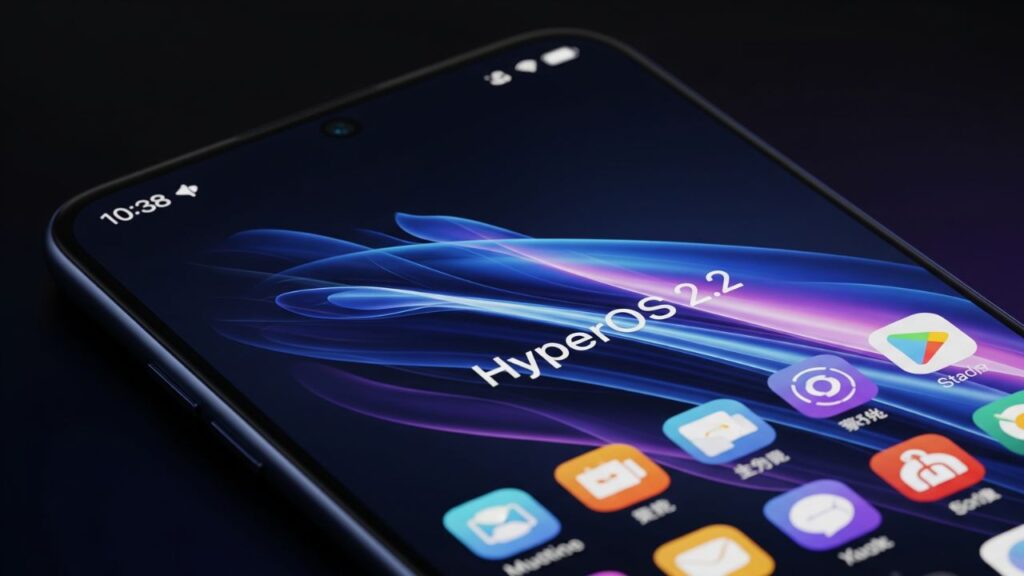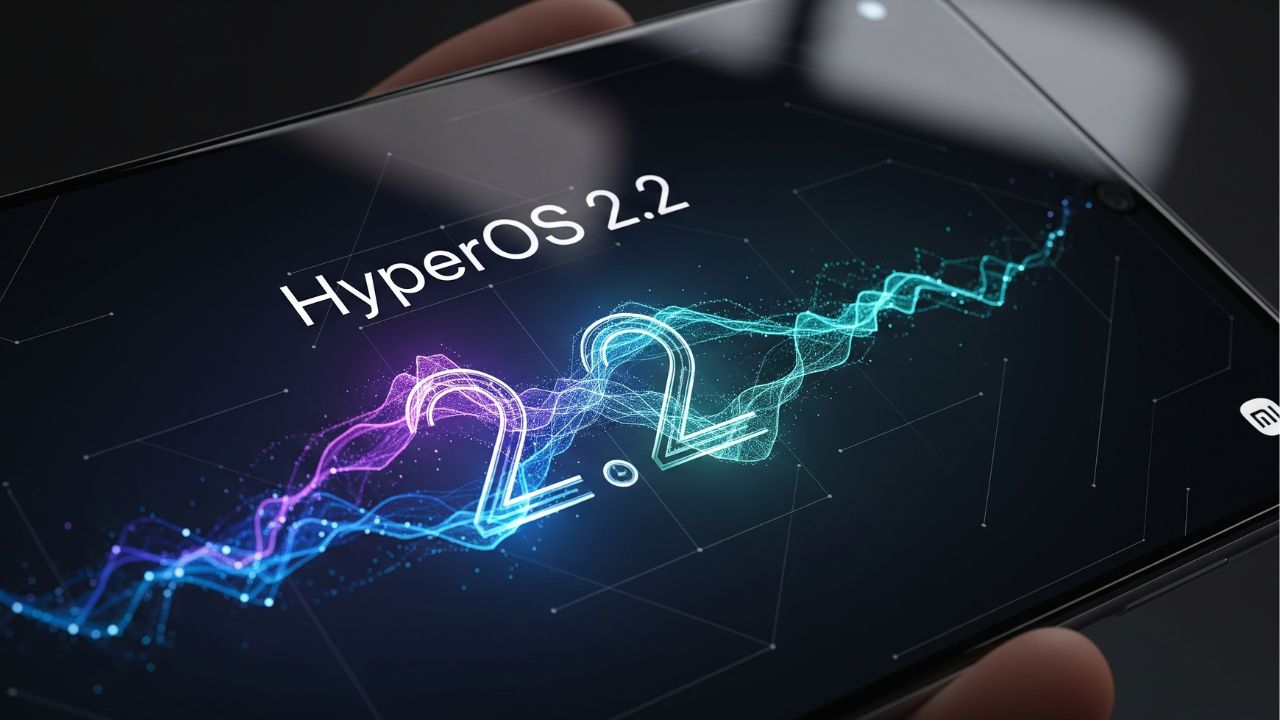Xiaomi’s HyperOS 2.2 Rollout: Xiaomi has just made a big gamble that will drastically alter the Android world when it announced the latest HyperOS 2.2. The update is not another software update to millions of users who are utilizing the system across the world, but a total mind shift in the way people will be accessing/seeing their devices and the world. HyperOS 2.2 is the endeavor to reinvent your smart tech experience with marked advancements in design, performance, connectivity and ecosystem integration.
However, just what is really special about Xiaomi’s HyperOS 2.2? What does everyone in the tech world keep talking about? What happens on its effect on the common user? This deep-dive looks at all you need to know about HyperOS 2.2 including its key features, which devices they are compatible with, improved performance, and what it entails regarding big changes to Xiaomi.
What is HyperOS? A Pocket Refresher
Before getting into the specifics of version 2.2 it may be worthwhile explaining what HyperOS is and why it exists.

HyperOS is the proprietary operating-system created by Xiaomi as the replacement to their popular MIUI. In contrast to MIUI that had been founded on stock Android, HyperOS is a hybrid operating system developed using a proprietary system framework, Vela, created by Xiaomi and some components of Android and the Linux kernel which is an open-source kernel. The aim? To establish a coherent and fluid Xiaomi experience throughout all of the brand products which include not only smartphones and tablets, but also TVs, smartwatches and even electric vehicles.
Introduced later, in the fall of 2023, HyperOS was not without promises: it was supposed to prevent fragmentation, improve the work of the device, and unite the entire Xiaomi ecosystem into a single software envelope. And thus far it has justified the hype.
It is now that as with the introduction of HyperOS 2.2, Xiaomi has moved another step ahead.
What new and exciting things about HyperOS 2.2?
What makes the difference this HyperOS 2.2 is not a simple upgrade, it is a massive overhaul with massive upgrades overall. The following are the outstanding characteristics which make it revolutionary:
Slimmer, more Intuitive Design
The Xiaomi’s HyperOS 2.2 has an entirely new user interface (UI) that is oriented primarily toward fluid motion, natural interactions, and visual harmony. It takes the finest aspects of minimalism with the purpose of making sure that form is not the fun of function.
- There is new iconography and a redesigned control center that would help with faster accessibility to most important functions.
- Better frame optimization gives really buttery smooth transitions and animations.
- Now the dark mode and light mode have been changed, and they are automatically different depending on the lighting.
- The ability to personalize has been increased with a new dynamic theme engine.
Read Also: Redmi 15 5G Review: The Ultimate Budget Performer of 2025
Next Generation AI Integration
A top line attraction of Xiaomi’s HyperOS 2.2 is clever system-wide AI incorporation. In the OS Xiaomi has added smart features allowing your phone to work with you instead of working only for you.
- AI Smart Hub recommends actions, apps or content and is dependent on your usage patterns.
- Photo and video editing AI stand up to those of high end desktop programs on-device.
- HyperMind AI makes cross-language communication as it allows instant translation and transcription in real life.
- Battery optimization through AI technologies allows prolonging the life of devices at smart charging and energy consumption forecasts.
HyperConnect: Xiaomi Ecosystem in Their Principles
Using Xiaomi’s HyperOS 2.2, HyperConnect has been made fully functional. This is the ability to have a smooth communication and coordination with all your Xiaomi device.
- Transfer necessary files, the contents of a clipboard or tasks to your phone, tablet or PC very easily.
- Get called or carry on with the messages using your tablet or laptop and do not miss anything.
- Your Xiaomi Watch and Smart TV now mirror your smartphone in real-time no more manual paring required.
- Multi-device control panel works to control all Xiaomi devices in a row.
Performance and battery life Turbocharged
The fastness and efficacy has always been prime in a great user experience. HyperOS 2.2 pays substantial attention to performance increase, such as:
- The HyperEngine 2.2 enhances gaming and multi-tasking activities through the artificial intelligence resource distribution.
- The technologies support rapid opening of apps by up to 20 per cent, in RAM compression and swap technologies.
- Thermal optimization will keep the devices cool in demanding-intensive jobs.
- Battery AI Manager gets to know your habits and uses power-saving strategies based on it.
Matchless privacy and security functionalities
We need privacy in this age of internet because the digital world has become mandatory. The new release, Xiaomi’s HyperOS 2.2 has a three-tier privacy architecture:
- Real-time permission monitor displays what happens when there is background activity in apps.
- When sharing the screen, AI Mask hinders sensitive information from being shown.
- New Privacy Dashboard provides the user with the ability to completely control and decide what kind of data the apps have access to.
HyperOS 2.2 Supported devices
Xiaomi has verified that HyperOS 2.2 will be implemented over time to other Xiaomi, Redmi, and POCO devices. These are some of the major models that are getting the update in the first wave:
Xiaomi Devices:
- Xiaomi 14 Series
- Xiaomi 13, 13 Pro, 13 Ultra
- Xiaomi 12 Series
- Xiaomi MIX Fold 2 and Fold 3
- Xiaomi Pad 6 and Pad 6 Max
Redmi Devices:
- Redmi Note 13 Pro, and Pro+
- Redmi K70 Series
- Redmi Note 12 Edition
- Redmi Pad SE
POCO Devices:
- POCO F5 and F5 Pro
- POCO X6 Pro
- POCO M6 Series
According to the company, additional devices will be added in the next several months, region and hardware flexibility dependant.
Read Also: Upcoming iPhone 17 Series: What to Expect in 2025
Upgrading to the HyperOS 2.2
When it is time to update, this process is simple provided that your gadget is available:
- Visit the phone Setting-about phone.
- Touch HyperOS Version.
- In the event that the update is ready, press Download and Install.
- Be connected to Wi-Fi and make sure that your phone is not less than 50 percent battery.
Xiaomi suggests that it would be best that you back up your data prior to the update installation, particularly as far as significant updates on the OS are concerned (such as the current one).
How People Are Reacting?
Initial users of HyperOS 2.2 had been relaying positive responses on the Internet. As per both tech freaks and ordinary users:
- The animations are smooth like iOS!
- HyperConnect literally causes my devices to work together magically.
- The editing tools on the AI are off the charts- I edited a reel within 5 mins.
- I am getting a feeling of improved battery life with the update.
On the Reddit feeds, YouTube reviews, and Twitter dwellings (now X), there are all out praises but some have mentioned issues with thing Bugs, which is normal in the event of an initial rollout. Xiaomi has promised to do consistent patches and hotfixes over the next few weeks.
HyperOS vs MIUI: Occasional Skip Ahead
Then what now is HyperOS 2.2 compared to MIUI 14 or previous?
| Feature | MIUI 14 | HyperOS 2.2 |
| UI Design | Colorful, slightly cluttered | Sleek, minimalist, adaptive |
| Performance | Fast, but resource-heavy | Lighter, optimized with AI |
| Ecosystem | Limited | Fully connected (HyperConnect) |
| Updates | Android-based | Xiaomi’s hybrid (Vela + Android) |
| AI Features | Minimal | Deep AI integration system-wide |
| Security | Standard | Advanced privacy dashboard & AI Mask |
These differences are not superficial ones; rather, they are basic. HyperOS does not lay over Android as a skin; rather it is a smarter and more compact operating system designed to power the future of smart living.
So What Does This Mean to the Global Strategy of Xiaomi?
HyperOS 2.2 is not just an operating system, it is an assertion of purpose. Xiaomi is more than a hardware company now, it is increasingly a smart ecosystem powerhouse.
Integrating an ecosystem with AI at its centerpiece, scale means building a highly efficient machine that requires thousands of sophisticated cogs and supporting mechanisms and more importantly, it requires an in-house designed operating system that not only makes the system entirely expandable but also eventually creates a new world of operating system that matches the lifestyle that Xiaomi delivers as a leading tech lifestyle company be it through smartphones or smart homes or even smart cities.
- The rollout means that Xiaomi has a home advantage in China, where an already stiff rivalry between the firm and Huawei and Honor is intensified.
- HyperOS has the potential to further help Xiaomi establish an identity outside of Android, which may become key when supply chains and software access become disrupted owing to geopolitical tensions.
Conclusions: Is an upgrade to HyperOS 2.2 Worth It?
The answer is an emphatic YES in case your Xiaomi device has the support.
HyperOS 2.2 is a modern mobile experience which is everything you want it to be:
- Performance and speed
- Personalization and plasticity
- Brainy functionality that really seems smart
- Improved merging of your virtual life
- Increased user protection
As a casual user, a creative professional, gamer or simply a person who wants his or her tech working better, HyperOS 2.2 will have your back in every regard.

2 thoughts on “Xiaomi’s HyperOS 2.2 Rollout Redefines the Android Experience”